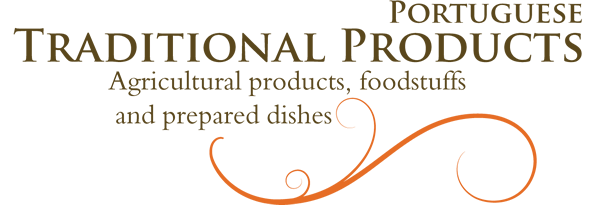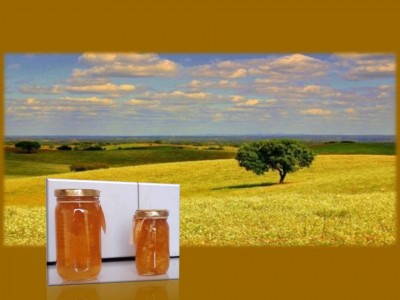Description: The Mel do Alentejo PDO is a honey made by the Apis mellifera Iberica species of bee with the naturally occurring pollens in the Alentejo region. Depending on the predominant percentages of pollen, rosemary, eucalyptus, orange blossom and wild flower honeys are all produced here.
Production method: Mobile hives are used in this region which have to be less than five years old. No artificial feeding is permitted or other phytosanitary processes. The honey is only produced in the traditional way, such as with the use of steam, air pressure or boiling water. The honey is only extracted by the centrifuge method. Crystallised honey can be brought to a maximum temperature of 45 °C to facilitate filtering and centrifuging.
Distinctive features: Mel do Alentejo PDO honey is still produced today in the traditional way on wooden frames, from which it is removed and separated from the beeswax by air pressure. In the distant past cork bark was used which used to be easily found in the Alentejo region.
Production area: Mel do Alentejo PDO honey is made in the municipal areas of Alandroal, Alvito, Arraiolos, Barrancos, Beja, Borba, Cuba, Estremoz, Elvas, Évora, Ferreira do Alentejo, Fronteira, Montemor-o-Novo, Mora, Mourão, Portel, Redondo, Reguengos de Monsaraz and Serpa, in the districts of Évora, Beja and Portalegre.
History: The high quality of Mel do Alentejo PDO honey is the result of an ancient tradition. Already at the time of the first kings of Portugal there are testimonies to the privileges conceded to the beekeepers of the time, abelheiros, who were allowed to use honey in payment of their taxes and use it as a currency in their trading activities. Alandroal, Portel, Redondo and Vila Viçosa were villages whose economy was traditionally based on the production of honey. At the present time the Alentejo region holds the second position in Portugal for its number of hives and beekeepers. Alentejo honey was also the first Portuguese honey to gain international recognition and win awards.
Product specification (pdf)
Producer group
MONTEMORMEL - Assoc. dos Apicultores do Concelho de Montemor-o-Novo
Publication in EU official journal
Regulamento (CE) n.º 510/2006 do Conselho 25.09.2013 - C 276/14
Regulamento (CE) n.º 1107/96 da Comissão de 12.06.1996 – L 148/1



